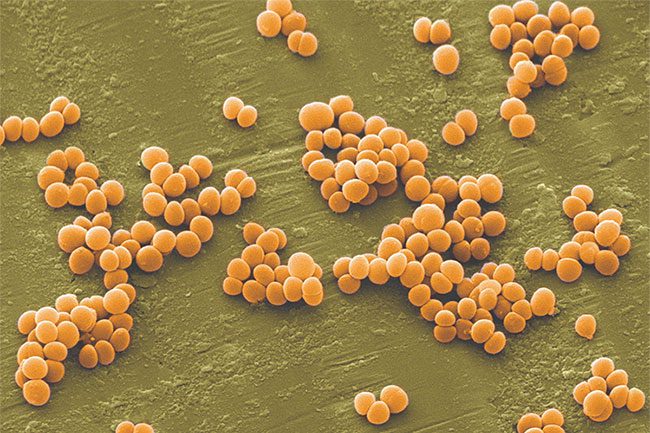According to the Vietnam Institute of Applied Medicine, Staphylococcus is a type of bacteria commonly found in various natural environments, with Staphylococcus aureus being the most prevalent.
Under normal conditions, these bacteria do not cause illness; however, when they invade the body through cuts on the skin, the respiratory system, or the digestive tract, they can lead to severe infections such as: impetigo, cellulitis; osteomyelitis, pneumonia, and in severe cases, if they enter the bloodstream, they can cause septicemia, shock, multiple organ failure, and even death.
Anyone can suffer from food poisoning after consuming food contaminated with Staphylococcus aureus. The foods most susceptible to Staphylococcus aureus contamination include: eggs, beef, poultry, salads (containing eggs, tuna, chicken, potatoes, pasta), cream-filled pastries, and dairy products.
The source of Staphylococcus aureus contamination can be due to unsanitary cooking utensils or food preparation processes, or from poor quality food selection, handling, and storage.

Anyone can suffer from food poisoning after consuming food contaminated with Staphylococcus aureus.
Symptoms of Staphylococcus aureus Infection
- Severe vomiting due to the bacteria releasing toxins into food, causing poisoning in the affected individuals.
- Patients may experience fever.
- In severe cases, diarrhea and dizziness may occur.
Prevention of Staphylococcus aureus Infection
Currently, there is no specific vaccine to prevent diseases caused by Staphylococcus aureus. However, individuals can take the following measures to prevent the spread of the bacteria:
- If there is a skin infection, cover the affected area with a clean, dry bandage. Maintain good hygiene, wash hands as directed, avoid close contact with infected individuals, and ensure that cuts, scratches, and wounds on the skin are cleaned to minimize the risk of Staphylococcus aureus entering through these open wounds.
Adhere to food preparation and handling safety rules to reduce the risk of poisoning caused by Staphylococcus.
- Thoroughly wash hands with soap and water before preparing food.
- If you have a wound, skin infection, or infection in the eyes or nose, do not prepare food for others.
- Clean and disinfect the kitchen and dining areas.
When cooking, ensure that the temperature exceeds 60 degrees Celsius and keep food refrigerated below 4 degrees Celsius.
Foods that need to be kept cold should be placed in the refrigerator as soon as possible.


















































